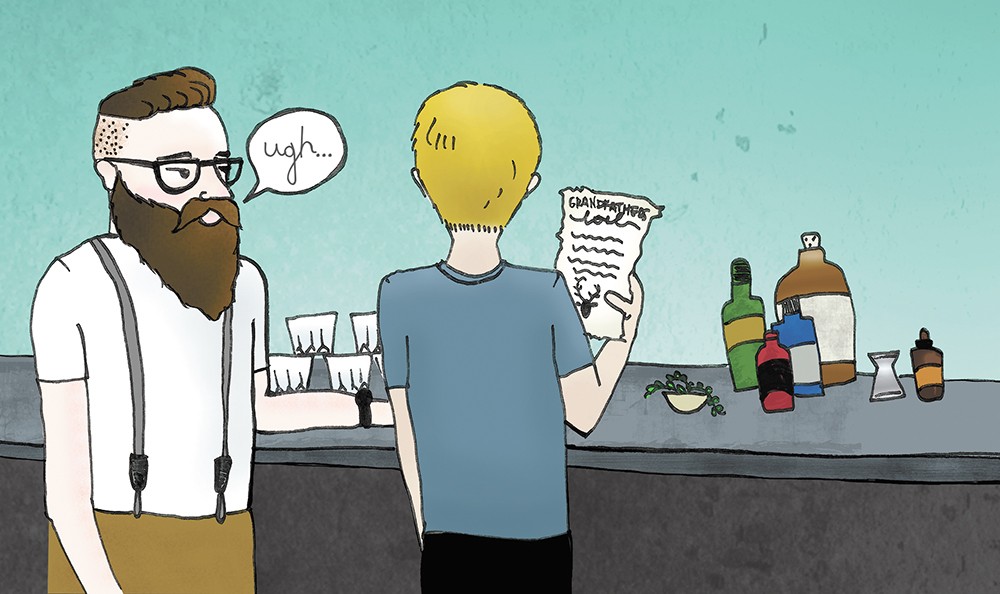Booze ain't what it used to be, or maybe it's more what it used to be than ever. And it's everywhere — bottles set out in a Seattle boutique, for example, where you're invited to mix yourself a little something while trying to figure out what this store actually sells. Plant cuttings, buck knives, $500 skirts. Carefully curated vinyl by bands you love, bands you might now have to hate, their albums so desperately and so effectively branding this dress shop/haberdashery/greenhouse as cool. There's poetry, too (isn't this place itself a kind of poem?), Allen Ginsberg's "Howl" stacked with the cocktail hardware. You read a few lines and wonder if you're looking for "the ancient heavenly connection to the starry dynamo in the machinery of night," or if you simply want a vintage martini shaker.
Another clerk approaches, inviting you to fix yourself a drink at the table in back. This is a good trend, you think, shopping and drinking. It should be expanded immediately, kegs tapped at tire stores, for example, so you can have a beer while you wait for an alignment. On the booze table is a recipe on distressed paper for a cocktail called a Grandfather's Boil, written by Dexter Fontaine, Seattle's preeminent artisanal craft cocktail mixologist. But the list of ingredients has you wondering if Dexter Fontaine cares about booze at all.
First there's .3 ounces of green chartreuse. You figure maybe you can skip that ingredient, but next it's two spritzes of velvet falernum, which sounds kind of sexy, kind of filthy, and then nine drops of rosewater and a jigger of Lillet. A dude in a Civil War beard sighs behind you, waiting to mix his Grandfather's Boil. You scan the recipe for something you can just pour into a glass. The three stalks of pre-measured powdered Palouse wheat can't possibly be real. Same for the freshly raked leaf garnish. Looks like everything's going to have to be left out of this cocktail. But then you find it. Actual booze! Only it's cinnamon and apple-infused. Don't ask why. Just pour a few fingers over a boulder of ice, the mold for which you can purchase up front for $125.
Take your "whiskey" and walk the boutique, wondering why they couldn't just have a bottle of Kentucky or Washington bourbon back there and some good vermouth, French or Italian, some good bitters, from Trinidad, Seattle, Spokane, because excellent bitters are made all over now. Maybe a bottle of gin, some tequila. Some simple syrup and an orange in case somebody wants an Old Fashioned. Maybe some eastern Oregon dung powder. No. Not that. Just the booze.
You only came here because your daughter wanted to look at $400 T-shirts. You leave the contaminated bourbon on a vinyl copy of the Velvet Underground & Nico, something you'll never listen to again, proving that you're just as pretentious as the people who run this place, just as desperate to possess and protect the markers of your cool, which can't be protected or possessed. How horrific that this store has so easily figured you out, this market for cool that destroys cool, showing how uncool cool becomes the second it becomes commodified.
Booze doesn't need to be complicated to be cool. All you need is a dark bar stocked with good liquor, bitters, vermouth, and a skilled bartender mixing those ingredients into the best Manhattan you've ever tasted, as good as your grandfather's — no, better, because the ingredients today are better — perfectly cooled, then gone. ♦


